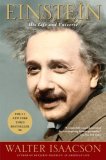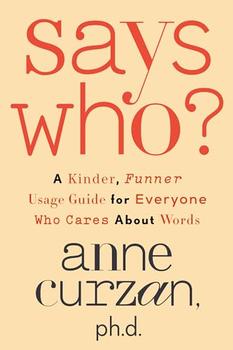Summary | Excerpt | Reviews | Beyond the Book | Readalikes | Genres & Themes | Author Bio

Critics' Opinion:
Readers' Opinion:
First Published:
Apr 2007, 704 pages
Paperback:
May 2008, 704 pages
 Book Reviewed by:
Book Reviewed by:
BookBrowse Review Team
Buy This Book
CHAPTER ONE
THE LIGHT-BEAM RIDER
"I promise you four papers," the young patent examiner wrote his friend. The letter would turn out to bear some of the most significant tidings in the history of science, but its momentous nature was masked by an impish tone that was typical of its author. He had, after all, just addressed his friend as "you frozen whale" and apologized for writing a letter that was "inconsequential babble." Only when he got around to describing the papers, which he had produced during his spare time, did he give some indication that he sensed their significance.
"The first deals with radiation and the energy properties of light and is very revolutionary," he explained. Yes, it was indeed revolutionary. It argued that light could be regarded not just as a wave but also as a stream of tiny particles called quanta. The implications that would eventually arise from this theory -- a cosmos without strict causality or certainty -- would spook him for the rest of his life.
"The second paper is a determination of the true sizes of atoms." Even though the very existence of atoms was still in dispute, this was the most straightforward of the papers, which is why he chose it as the safest bet for his latest attempt at a doctoral thesis. He was in the process of revolutionizing physics, but he had been repeatedly thwarted in his efforts to win an academic job or even get a doctoral degree, which he hoped might get him promoted from a third- to a second-class examiner at the patent office.
The third paper explained the jittery motion of microscopic particles in liquid by using a statistical analysis of random collisions. In the process, it established that atoms and molecules actually exist.
"The fourth paper is only a rough draft at this point, and is an electrodynamics of moving bodies which employs a modification of the theory of space and time." Well, that was certainly more than inconsequential babble. Based purely on thought experiments -- performed in his head rather than in a lab -- he had decided to discard Newton's concepts of absolute space and time. It would become known as the Special Theory of Relativity.
What he did not tell his friend, because it had not yet occurred to him, was that he would produce a fifth paper that year, a short addendum to the fourth, which posited a relationship between energy and mass. Out of it would arise the best-known equation in all of physics: E=mc2.
Looking back at a century that will be remembered for its willingness to break classical bonds, and looking ahead to an era that seeks to nurture the creativity needed for scientific innovation, one person stands out as a paramount icon of our age: the kindly refugee from oppression whose wild halo of hair, twinkling eyes, engaging humanity, and extraordinary brilliance made his face a symbol and his name a synonym for genius. Albert Einstein was a locksmith blessed with imagination and guided by a faith in the harmony of nature's handiwork. His fascinating story, a testament to the connection between creativity and freedom, reflects the triumphs and tumults of the modern era.
Now that his archives have been completely opened, it is possible to explore how the private side of Einstein -- his nonconformist personality, his instincts as a rebel, his curiosity, his passions and detachments -- intertwined with his political side and his scientific side. Knowing about the man helps us understand the wellsprings of his science, and vice versa. Character and imagination and creative genius were all related, as if part of some unified field.
Despite his reputation for being aloof, he was in fact passionate in both his personal and scientific pursuits. At college he fell madly in love with the only woman in his physics class, a dark and intense Serbian named Mileva Maric´. They had an illegitimate daughter, then married and had two sons. She served as a sounding board for his scientific ideas and helped to check the math in his papers, but eventually their relationship disintegrated. Einstein offered her a deal. He would win the Nobel Prize someday, he said; if she gave him a divorce, he would give her the prize money. She thought for a week and accepted. Because his theories were so radical, it was seventeen years after his miraculous outpouring from the patent office before he was awarded the prize and she collected.
Copyright © 2007 by Walter Isaacson




Asking a working writer what he thinks about critics...
Click Here to find out who said this, as well as discovering other famous literary quotes!
Your guide toexceptional books
BookBrowse seeks out and recommends the best in contemporary fiction and nonfiction—books that not only engage and entertain but also deepen our understanding of ourselves and the world around us.